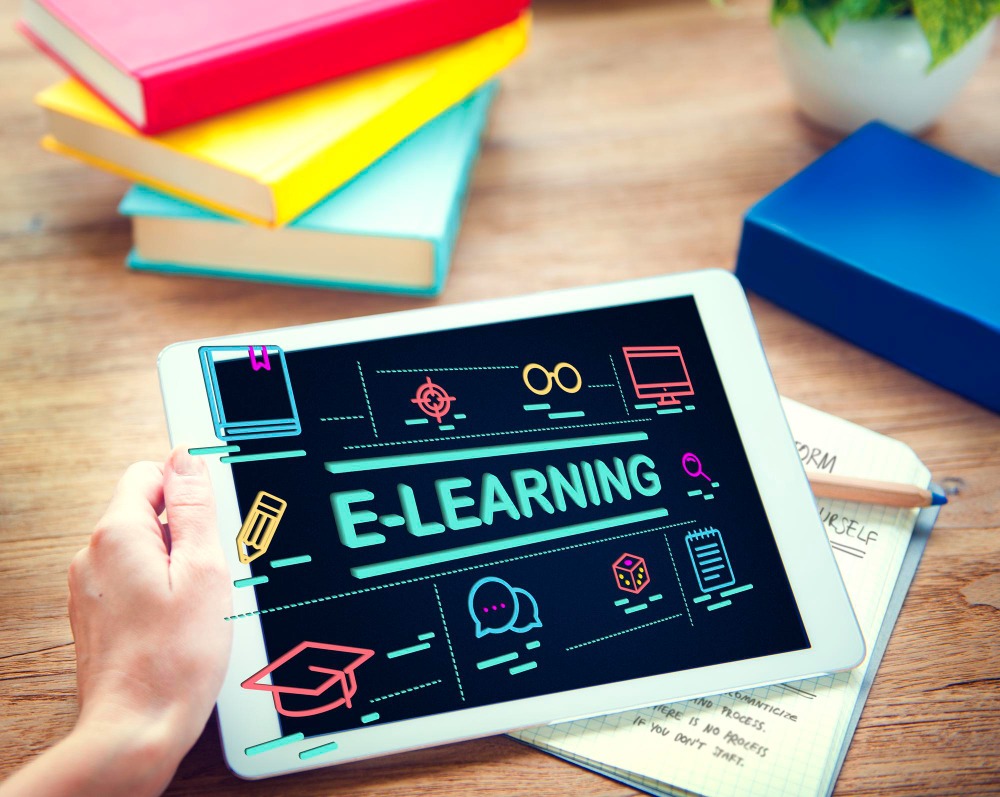The landscape of learning is undergoing a dramatic transformation. Gone are the days of passive, text-heavy learning materials. Today, learners crave engagement, interactivity, and experiences that cater to their individual needs. This is where interactive e-learning platforms come in – dynamic tools that are revolutionizing the way we design and deliver educational content.
The Learning Evolution: From Static to Dynamic
Traditional curriculum design often relied on static elements – textbooks, lectures, and rote memorization. While these methods have served their purpose, they struggle to capture the attention of today’s digital-native learners. Here’s why a shift is necessary:
- Limited Engagement: Static content can quickly become monotonous, leading to disinterest and hindering knowledge retention.
- Passive Learning: Traditional methods often adopt a “one-size-fits-all” approach, failing to cater to diverse learning styles and paces.
- Lack of Practical Application: Curriculums may not effectively bridge the gap between theory and practice, leaving learners unsure of how to apply their knowledge in real-world scenarios.
Statistics: A report by Udemy revealed that 73% of learners say they are more likely to complete online courses that are interactive [2].
The Interactive E-Learning Revolution: Features and Benefits
Interactive e-learning platforms address these challenges by offering a dynamic and engaging learning experience:
- Multimedia Elements: These platforms incorporate video lectures, simulations, gamification elements, and interactive quizzes to create a more stimulating learning environment.
- Personalized Learning Paths: Many platforms offer adaptive learning features that tailor content and pace to individual learner needs and progress.
- Microlearning Modules: Bite-sized learning modules allow learners to focus on specific topics at their convenience, promoting better information retention.
- Collaboration Tools: Interactive platforms can facilitate discussions, group projects, and peer feedback, fostering collaboration and knowledge sharing.
Statistics: A study by Brandon Hall Group found that companies that implemented interactive e-learning programs experienced a 49% increase in employee retention [3].
Curriculum Design in the Interactive Age: Embracing New Possibilities
Interactive e-learning platforms empower educators and curriculum designers to create a more effective learning experience:
- Focus on Learning Outcomes: The interactive nature allows for a shift from rote memorization to a focus on deeper understanding and skill development.
- Content Flexibility: These platforms enable the creation of dynamic and adaptable content that can be easily updated to reflect industry trends and learner feedback.
- Data-Driven Insights: Interactive platforms provide valuable data on learner engagement and knowledge gaps, allowing for continuous improvement of curriculum design.
Statistics: A report by the Association for Talent Development (ATD) revealed that organizations using learning management systems (LMS) with interactive content reported a 21.8% increase in learning transfer [4].
Beyond the Platform: Considerations for Successful Implementation
While interactive e-learning platforms offer immense potential, successful implementation requires careful consideration:
- Content Quality: Engaging visuals and well-structured content remain crucial for effective learning, regardless of the platform.
- Faculty Training: Educators need training on using the platform’s features effectively and integrating them seamlessly into existing curriculum.
- Accessibility: Ensuring platform accessibility for learners with disabilities is essential for inclusive learning.
Statistics: A study by eLearning Industry found that 42% of learners say a lack of engaging content is the biggest barrier to completing online courses [5].
The Future of Learning: A Blended Approach
The future of learning is likely to embrace a blended approach that combines the strengths of both traditional methods and interactive e-learning:
- Personalized Learning Experiences: Technology will personalize learning journeys, catering to individual knowledge levels, learning styles, and goals.
- Immersive Technologies: Virtual reality (VR) and augmented reality (AR) have the potential to create even more immersive and interactive learning experiences.
- Continuous Learning Culture: Interactive e-learning platforms foster a culture of continuous learning, allowing learners to easily access and update their knowledge throughout their careers.
Statistics: A report by Gartner predicts that by 2025, 80% of learning and development professionals will be using blended learning strategies [6].
Frequently Asked Questions (FAQ)
General Questions:
- What is interactive e-learning?
Interactive e-learning platforms are online learning environments that incorporate multimedia elements, gamification, and learner engagement features to create a more dynamic and stimulating learning experience compared to traditional static content.
- Why is interactive e-learning becoming increasingly popular?
Today’s learners crave engagement and personalization. Interactive e-learning platforms cater to these needs by offering a more engaging and effective learning experience compared to traditional methods.
- What are the limitations of traditional curriculum design?
Traditional methods often rely on static content, a one-size-fits-all approach, and limited application of knowledge. This can lead to disengagement and difficulty retaining information.
Interactive E-Learning Features and Benefits:
- What are some key features of interactive e-learning platforms?
These platforms offer features like video lectures, simulations, gamification elements, adaptive learning paths, microlearning modules, and collaboration tools.
- How can interactive e-learning benefit learners?
Learners experience a more engaging and personalized learning journey, fostering deeper understanding, better knowledge retention, and improved application of skills.
- How can interactive e-learning benefit organizations?
Organizations can see increased employee retention, improved learning outcomes, and a more adaptable workforce equipped with the latest skills.
Implementing Interactive E-Learning:
- What are some key considerations for successfully implementing interactive e-learning platforms?
Content quality remains crucial, faculty training is essential, and ensuring accessibility for all learners is vital.
- How can curriculum design be adapted for interactive e-learning platforms?
Curriculum design can shift focus from rote memorization to skill development and practical application, with content being adaptable and data-driven based on learner performance.
The Future of Learning:
- How will technology continue to shape the future of learning?
The future is likely to see a blended learning approach with personalized experiences, immersive technologies like VR/AR, and a culture of continuous learning facilitated by e-learning platforms.
- What are some trends to watch in the future of e-learning?
Increased use of artificial intelligence (AI) for personalization, gamified learning experiences, and microlearning opportunities tailored to busy learners are some potential future trends.
Conclusion
Interactive e-learning platforms are not just a fad; they represent a fundamental shift in how we approach learning. By fostering engagement, personalization, and a focus on practical application, they empower learners to take charge of their educational journey and unlock their full potential. As technology continues to evolve, the possibilities for interactive e-learning are limitless.


